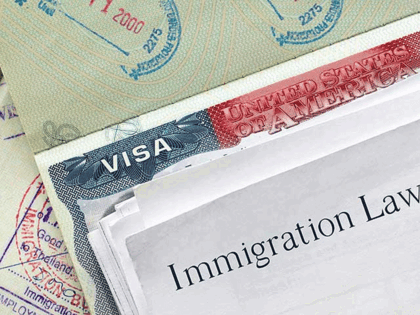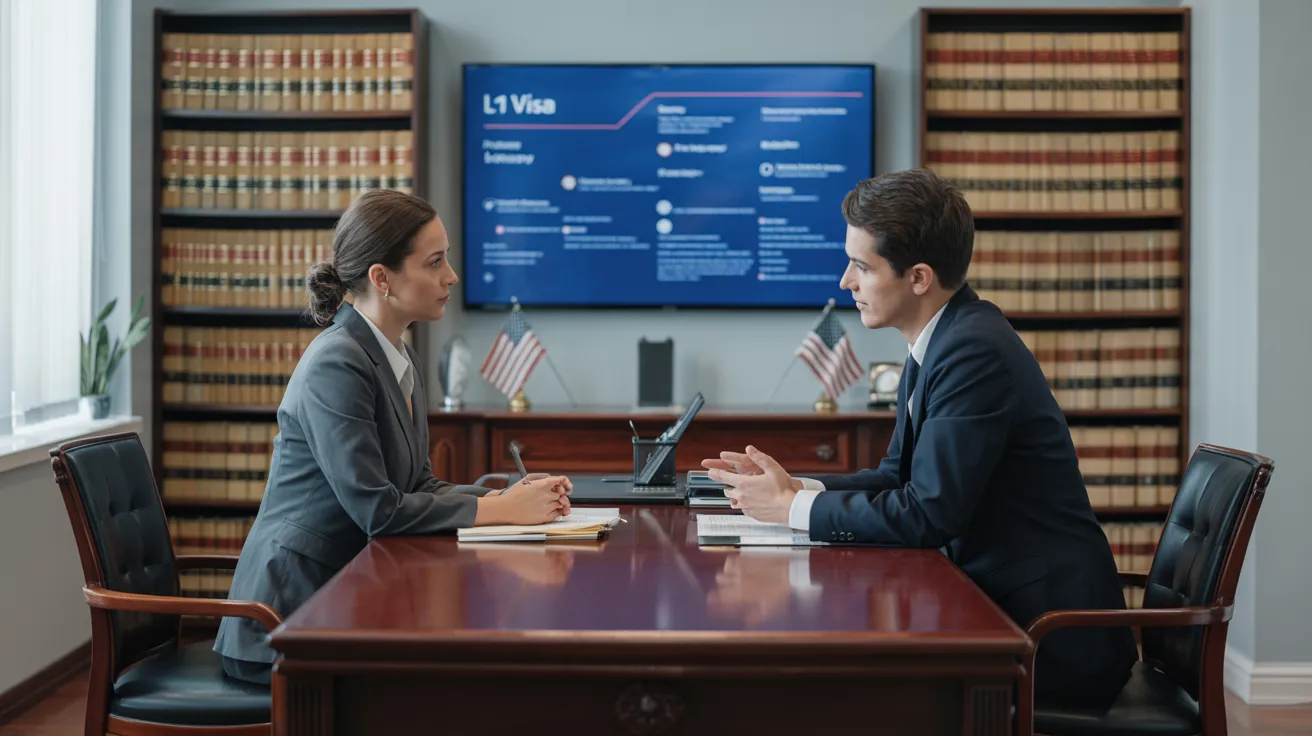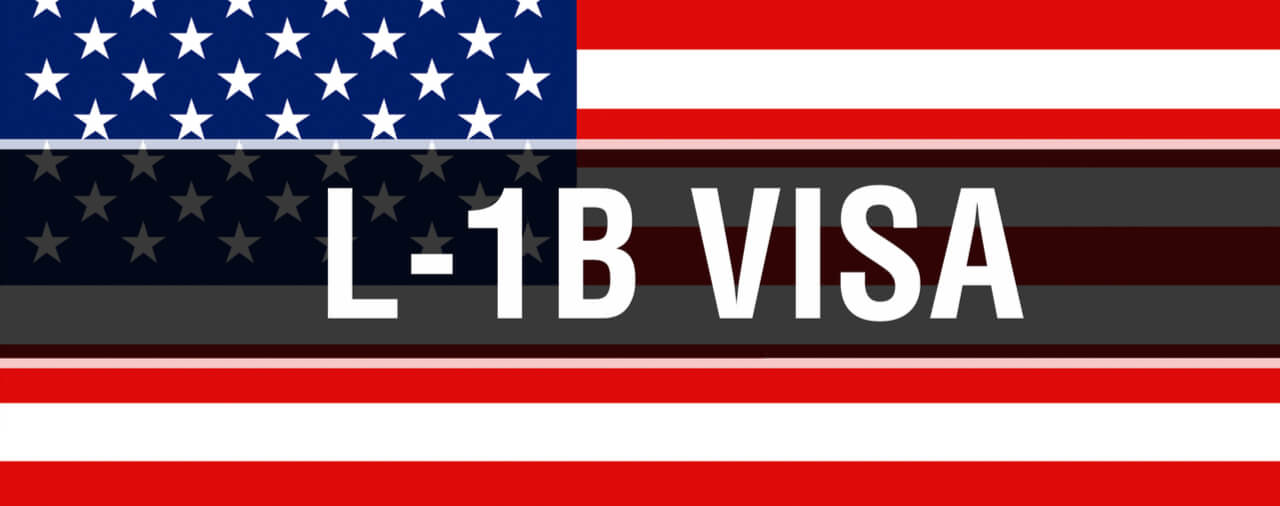Get L1 Visa
Unlocking Opportunities: A Comprehensive Overview to the L1 Visa Process
The L1 visa procedure presents an important pathway for international companies seeking to transfer key employees across borders. Comprehending the nuances of eligibility requirements, the distinctions in between L-1A and L-1B visas, and the ins and outs of the application procedure can significantly influence a candidate's success. However, maneuvering this facility landscape is not without its obstacles, and careful interest to documentation and company sponsorship is important. As we check out the essential elements of this process, the strategies for getting over possible challenges will certainly become apparent, disclosing exactly how informed prep work can open a world of possibilities.
Comprehending the L1 Visa
Recognizing the L1 visa requires acknowledging its value as a vital tool for international companies looking for to move knowledgeable staff members between worldwide offices. This non-immigrant visa classification helps with the movement of execs, supervisors, and specialized expertise workers to the United States, thereby making it possible for companies to preserve operational connection and harness global ability effectively. The L1 visa is split right into two key categories: L-1A for supervisors and execs, and L-1B for workers possessing specialized knowledge.The L1 visa offers an important duty in improving a business's one-upmanship in the international industry - L1 Visa Requirements. By permitting business to move their essential employees, businesses can assure that essential jobs are managed by qualified people that are already acquainted with the business's society and functional processes. This interior transfer mechanism not only promotes knowledge sharing however likewise advertises advancement and collaboration across borders.Moreover, the L1 visa is commonly preferred for its reasonably uncomplicated application process contrasted to various other visa categories, as it permits double intent, allowing holders to pursue permanent residency while on a short-term job visa. This function makes the L1 visa specifically appealing for both companies and staff members, as it improves the path for experienced specialists to establish long-lasting residency in the United States
Eligibility Criteria
Qualification for the L1 visa pivots on several key requirements that guarantee both the employee and the company fulfill details qualifications. This non-immigrant visa is developed for multinational business to move staff members from international offices to U.S. counterparts.Firstly, the company must be a qualifying organization, that includes a parent company, branch, associate, or subsidiary of a united state organization. The firm needs to have been doing organization for at the very least one year both in the united state and abroad. This guarantees that the company has adequate functional security and a reputable presence.Secondly, the staff member has to hold a supervisory, exec, or specialized knowledge setting. For L1A visas, the candidate needs to demonstrate supervisory or executive qualifications, while L1B visas concentrate on specialized knowledge relevant to the organization's products, solutions, or processes. In addition, the worker needs to have worked for the international entity for at least one constant year within the last three years before their application.Lastly, the employee's duty in the U.S. must straighten with their previous position, ensuring that their abilities and competence are leveraged for the company's benefit.
Sorts Of L1 Visas
The L1 visa group comprises two key kinds made to promote the transfer of employees within international business: the L1A visa for supervisors and execs, and the L1B visa for workers with specialized knowledge. Each type serves distinctive functions and has specific eligibility criteria.The L1A visa is customized for people who hold supervisory or executive placements within a company. This visa allows top-level staff members to transfer to an U.S. branch, subsidiary, or affiliate of the same organization. Candidates for the L1A visa need to demonstrate that they have actually been utilized in a managerial or executive ability for at the very least one continual year within the previous 3 years before their application. In addition, this visa provides a longer period of keep, at first provided for 3 years, with the possibility of expansions for as much as 7 years.In contrast, the L1B visa is meant for professionals with specialized understanding related to the firm's items, solutions, or procedures. To qualify, applicants have to prove that their competence is crucial to the company and that they have worked for at least one continuous year within the last 3 years in a function that required this specialized knowledge. The L1B visa is initially approved for 3 years, with extensions readily available for approximately 5 years.Both visa types are important for firms looking for to enhance their global operations by leveraging competent workers, thus advertising technology and efficiency within the united state market.
Application Process
Steering via the L1 copyright process entails numerous important actions that should be thoroughly followed to ensure an effective result. The procedure begins with the united state company, that should initially develop qualification by demonstrating a qualifying partnership with the foreign entity and verifying that the staff member satisfies the certain requirements for the L1 visa category being sought.Once qualification is confirmed, the employer launches the procedure by submitting Kind I-129, the Application for a Nonimmigrant Worker, with the U.S. Citizenship and Immigration Provider (USCIS) This type has to be come with by a comprehensive description of the work obligations to be carried out, the organizational framework of both the united state and international entities, and the staff member's qualifications. It's vital to confirm that all information is precise and full, as noninclusions or inaccuracies can result in hold-ups or denials.Upon approval of the I-129 application, the next step entails the employee obtaining the L1 visa at an U.S. embassy or consular office in their home country. This phase calls for the conclusion of Type DS-160, the Online Nonimmigrant copyright, and arranging a meeting. During the interview, the applicant should offer evidence supporting their credentials and the employer's petition.After the visa is given, the employee can enter the USA to operate in the designated role. On the whole, cautious preparation and adherence to each step of the application process are crucial for a successful L1 visa outcome.
Needed Documentation

Vital Kinds Needed
Maneuvering the L1 Visa procedure requires cautious attention to the important forms and paperwork needed for a successful application. The main type needed is the Type I-129, Petition for a Nonimmigrant Employee, which have to be completed and sent by the united state employer. This form lays out the details of the employment deal and the certifications of the worker seeking the L1 Visa.Alongside Type I-129, the applicant will certainly need to total Form I-539 if accompanying member of the family are likewise obtaining visas. Additionally, the company must provide evidence of the certifying connection in between the U.S. entity and the foreign entity, typically demanding the submission of corporate papers such as write-ups of incorporation or economic statements.Moreover, it is important to include the L Classification Supplement to Form I-129, which defines the sort of L Visa being requested-- either L-1A for supervisors and execs or L-1B for workers with specialized knowledge. Applicants need to ensure that all types are signed and dated suitably, as insufficient entries can lead to delays or rejections. Effectively assembling these crucial kinds lays the structure for a smoother L1 copyright procedure.

Supporting Proof Demands
Supporting paperwork is vital for a successful L1 copyright, as it confirms the cases made in the request. Applicants have to give a range of documents to show qualification for the visa, which is classified into 2 primary types: proof of the certifying connection in between the U.S. and foreign entities and proof of the applicant's qualifications.To develop the connection, applicants should send paperwork such as corporate organizational charts, economic statements, and evidence of ownership. These records confirm that the international company has a certifying connection with the united state employer, whether as a parent firm, subsidiary, branch, or affiliate.For the applicant's credentials, essential records include a detailed work letter from the foreign company, detailing the applicant's work title, tasks, and duration of employment. Additionally, educational qualifications, such as degrees and diplomas, must be provided to confirm the candidate's competence in the relevant area.
Employer Sponsorship Records

Common Obstacles
Maneuvering the L1 visa procedure offers several typical challenges that applicants must know. Secret concerns usually include stringent paperwork demands, potential delays in handling times, and the requirement for stringent legal compliance. Recognizing these obstacles can assist candidates better prepare and mitigate dangers during their copyright trip.
Paperwork Demands
The L1 copyright process commonly provides considerable difficulties connected to paperwork needs. Applicants need to give comprehensive paperwork to develop qualification, which can result in complication and possible hold-ups. Key documents include proof of a certifying connection in between the united state and international company, proof of the applicant's work history, and comprehensive details about the job function in the U.S.One typical difficulty is gathering adequate proof to show the nature of the certifying connection. Firms commonly have a hard time to present clear organizational charts or monetary declarations that illustrate the link in between the entities. In enhancement, ensuring that letters of assistance from companies properly show the applicant's job tasks and credentials is essential, as vague summaries can cause denials.Another issue occurs from the demand for comprehensive job descriptions that straighten with the L1 visa categories. Applicants must articulate not just their existing function however likewise their supervisory or specialized understanding obligations clearly. This demands an extensive understanding of both the candidate's setting and the regulatory language used in L1 applications.
Handling Time Hold-ups
Experiencing delays in processing times is a common obstacle dealt with by L1 visa applicants, usually leading to irritation and uncertainty. Several factors contribute to these hold-ups, including high application quantities, boosted scrutiny of applications, and administrative stockpiles within the U.S. Citizenship and Immigration Provider (USCIS) Candidates may find that processing times can differ greatly relying on the solution center managing their application, as each center has its own work and effectiveness levels. In addition, the complexity of the candidate's instance, such as the requirement for comprehensive documents or information, can further expand wait times.In some instances, problems associated with the applicant's existing immigration condition or previous visa background may also bring about additional hold-ups, as USCIS might require more review or info. It is essential for candidates to stay aggressive throughout this period, maintaining open interaction with their employers and lawful reps to resolve any kind of prospective worries promptly.Understanding these handling time obstacles can aid L1 visa candidates get ready for feasible hold-ups and minimize the effect on their shift and occupation strategies. Perseverance and persistance are important merits in maneuvering this complex procedure.
Lawful Compliance Issues
Several L1 visa candidates experience legal conformity issues that can complicate their trip towards acquiring the visa. Understanding and adhering to the certain policies set by the U.S. Citizenship and Migration Provider (USCIS) is crucial. Common difficulties include showing the qualifying partnership in between the international and U.S. companies, as well as verifying that the applicant possesses the requisite specialized knowledge or managerial capacity.Additionally, candidates must offer thorough documentation detailing their task obligations, company framework, and monetary viability of the U.S. entity. Inadequate or unreliable documents can bring about hold-ups or perhaps rejections. Employers have to also ensure that they abide by labor laws, including wage and L1 Visa functioning problem criteria, which can impact visa eligibility.Another typical issue involves maintaining conformity with the regards to the visa when approved. Modifications in work status, job responsibilities, or business framework can necessitate modifications to the visa, which otherwise addressed immediately can cause lawful difficulties. Therefore, remaining educated concerning conformity demands and looking for legal guidance when necessary is vital to navigate the intricacies of the L1 visa procedure effectively.
Tips for Success
Success in the L1 copyright procedure commonly rests on meticulous prep work and focus to detail. To enhance your opportunities of authorization, begin by completely recognizing the qualification needs for both the L1A and L1B visa groups. Assess whether your setting at the firm certifies as managerial, executive, or specialized understanding, as this classification notably impacts your application.Next, collect extensive paperwork that substantiates your cases. This consists of organizational charts, in-depth task descriptions, and proof of the firm's functional framework. Clear and succinct evidence of the qualifying connection between the U.S. entity and the foreign entity is important. Validate that all documents are organized logically and offered in a specialist manner, as this reflects your dedication and severity regarding the application.Engage the solutions of a seasoned migration lawyer who specializes in L1 visas. Their experience can confirm important, leading you via complex regulations and assuring that all paperwork follows existing laws. In addition, get ready for the interview by exercising response to common questions and preparing to review your role and contributions to the company extensive.
Regularly Asked Concerns
Can Household Members Accompany the L1 Visa Holder?
Yes, family members of L1 visa owners, consisting of spouses and unmarried youngsters under 21, can go along with the primary visa holder. They may additionally request L2 visas, which enable them to stay in the USA.
How Long Can I Remain On an L1 Visa?
The L1 visa permits first stays of approximately three years, with the opportunity of extension. L1A visa holders might remain for a maximum of 7 years, while L1B visa owners can stay for 5 years.
Can L1 Visa Holders Get an Environment-friendly Card?
Yes, L1 visa holders can make an application for an eco-friendly card. L1 Visa Requirements. They may seek long-term residency with employment-based classifications, typically calling for sponsorship from their employer, supplied they fulfill the required qualifications and documentation needs
What Happens if My L1 copyright Is Refuted?
If your L1 copyright is rejected, you might receive a notification detailing the reasons for denial. You can look for to appeal the decision, reapply, or explore alternative visa options based on your situations.
Are There Any Kind Of Travel Restrictions With an L1 Visa?
An L1 visa normally permits international travel; nonetheless, re-entry to the U. L1 Visa Requirements.S. is contingent upon maintaining valid status. Travelers must ensure conformity with visa conditions to stay clear of issues upon return
Verdict
